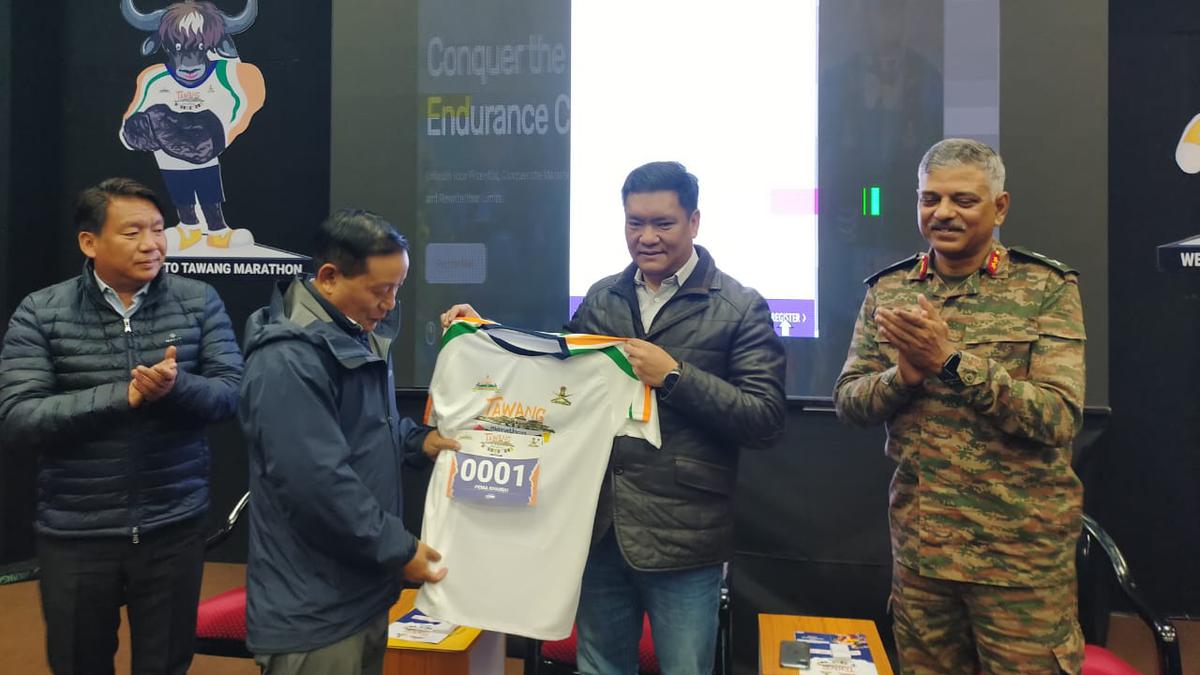
Arunachal Pradesh to host first-ever marathon at 10,000 feet
The Hindu
The Army and the Pema Khandu-led Arunachal Pradesh government have jointly thrown a challenge to fight off high-altitude breathlessness by jointly organising the first marathon event in the Eastern Himalayas on October 1. “Tawang, perched at an elevation of 10,000 ft above the mean sea level will present the participants a unique chance to take part in possibly the most challenging high-altitude run in the country,” a defence spokesperson said.
A drop in air pressure and oxygen levels makes it harder to breathe at higher elevations.
The air in Tawang is not as rarified as in Sela, a mountain pass en route at 13,700 ft. or Bumla on the Tibetan border beyond at 15,200 ft. above the mean sea level.
But it is not unusual for one to gasp for breath while brisk walking or running in Tawang, the headquarters of the Tawang district and the most popular Buddhist destination in Arunachal Pradesh.
The Army and the Pema Khandu-led Arunachal Pradesh government have jointly thrown a challenge to fight off high-altitude breathlessness by jointly organising the first marathon event in the Eastern Himalayas on October 1.
“Tawang, perched at an elevation of 10,000 ft above the mean sea level will present the participants a unique chance to take part in possibly the most challenging high-altitude run in the country,” a defence spokesperson said.
The Tawang Marathon will be the first such event of this scale planned in the northeast, he said. “The aim of this event is to put Tawang on the marathon map as well as promote the place, popular with tourists, as an adventure sports destination,” the spokesperson said.
Mr. Khandu showed his support for the event by becoming the first to register for the event, local officials said.

“Writing, in general, is a very solitary process,” says Yauvanika Chopra, Associate Director at The New India Foundation (NIF), which, earlier this year, announced the 12th edition of its NIF Book Fellowships for research and scholarship about Indian history after Independence. While authors, in general, are built for it, it can still get very lonely, says Chopra, pointing out that the fellowship’s community support is as valuable as the monetary benefits it offers. “There is a solid community of NIF fellows, trustees, language experts, jury members, all of whom are incredibly competent,” she says. “They really help make authors feel supported from manuscript to publication, so you never feel like you’re struggling through isolation.”

Several principals of government and private schools in Delhi on Tuesday said the Directorate of Education (DoE) circular from a day earlier, directing schools to conduct classes in ‘hybrid’ mode, had caused confusion regarding day-to-day operations as they did not know how many students would return to school from Wednesday and how would teachers instruct in two modes — online and in person — at once. The DoE circular on Monday had also stated that the option to “exercise online mode of education, wherever available, shall vest with the students and their guardians”. Several schoolteachers also expressed confusion regarding the DoE order. A government schoolteacher said he was unsure of how to cope with the resumption of physical classes, given that the order directing government offices to ensure that 50% of the employees work from home is still in place. On Monday, the Commission for Air Quality Management in the National Capital Region and Adjoining Areas (CAQM) had, on the orders of the Supreme Court, directed schools in Delhi-NCR to shift classes to the hybrid mode, following which the DoE had issued the circular. The court had urged the Centre’s pollution watchdog to consider restarting physical classes due to many students missing out on the mid-day meals and lacking the necessary means to attend classes online. The CAQM had, on November 20, asked schools in Delhi-NCR to shift to the online mode of teaching.









